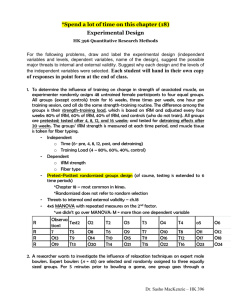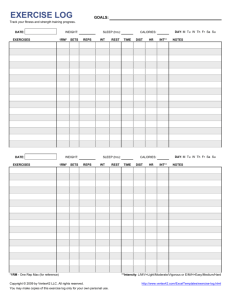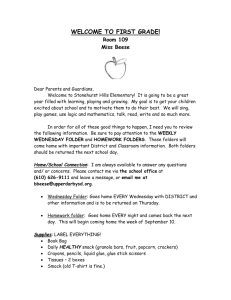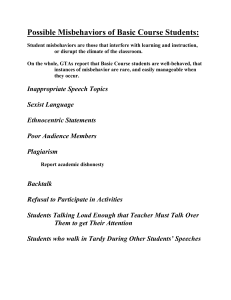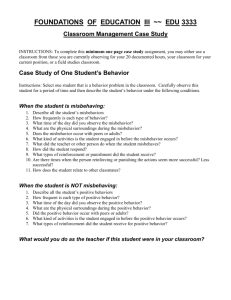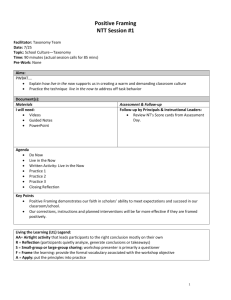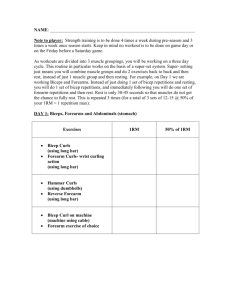Experimental Design
advertisement
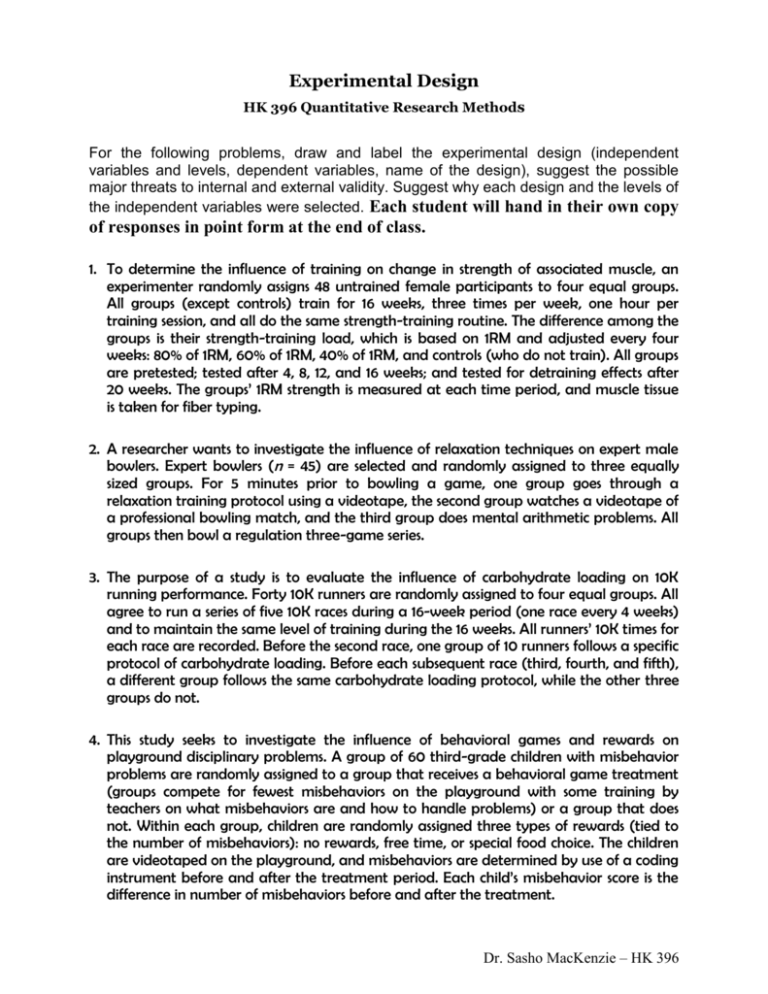
Experimental Design HK 396 Quantitative Research Methods For the following problems, draw and label the experimental design (independent variables and levels, dependent variables, name of the design), suggest the possible major threats to internal and external validity. Suggest why each design and the levels of the independent variables were selected. Each student will hand in their own copy of responses in point form at the end of class. 1. To determine the influence of training on change in strength of associated muscle, an experimenter randomly assigns 48 untrained female participants to four equal groups. All groups (except controls) train for 16 weeks, three times per week, one hour per training session, and all do the same strength-training routine. The difference among the groups is their strength-training load, which is based on 1RM and adjusted every four weeks: 80% of 1RM, 60% of 1RM, 40% of 1RM, and controls (who do not train). All groups are pretested; tested after 4, 8, 12, and 16 weeks; and tested for detraining effects after 20 weeks. The groups’ 1RM strength is measured at each time period, and muscle tissue is taken for fiber typing. 2. A researcher wants to investigate the influence of relaxation techniques on expert male bowlers. Expert bowlers (n = 45) are selected and randomly assigned to three equally sized groups. For 5 minutes prior to bowling a game, one group goes through a relaxation training protocol using a videotape, the second group watches a videotape of a professional bowling match, and the third group does mental arithmetic problems. All groups then bowl a regulation three-game series. 3. The purpose of a study is to evaluate the influence of carbohydrate loading on 10K running performance. Forty 10K runners are randomly assigned to four equal groups. All agree to run a series of five 10K races during a 16-week period (one race every 4 weeks) and to maintain the same level of training during the 16 weeks. All runners’ 10K times for each race are recorded. Before the second race, one group of 10 runners follows a specific protocol of carbohydrate loading. Before each subsequent race (third, fourth, and fifth), a different group follows the same carbohydrate loading protocol, while the other three groups do not. 4. This study seeks to investigate the influence of behavioral games and rewards on playground disciplinary problems. A group of 60 third-grade children with misbehavior problems are randomly assigned to a group that receives a behavioral game treatment (groups compete for fewest misbehaviors on the playground with some training by teachers on what misbehaviors are and how to handle problems) or a group that does not. Within each group, children are randomly assigned three types of rewards (tied to the number of misbehaviors): no rewards, free time, or special food choice. The children are videotaped on the playground, and misbehaviors are determined by use of a coding instrument before and after the treatment period. Each child’s misbehavior score is the difference in number of misbehaviors before and after the treatment. Dr. Sasho MacKenzie – HK 396
